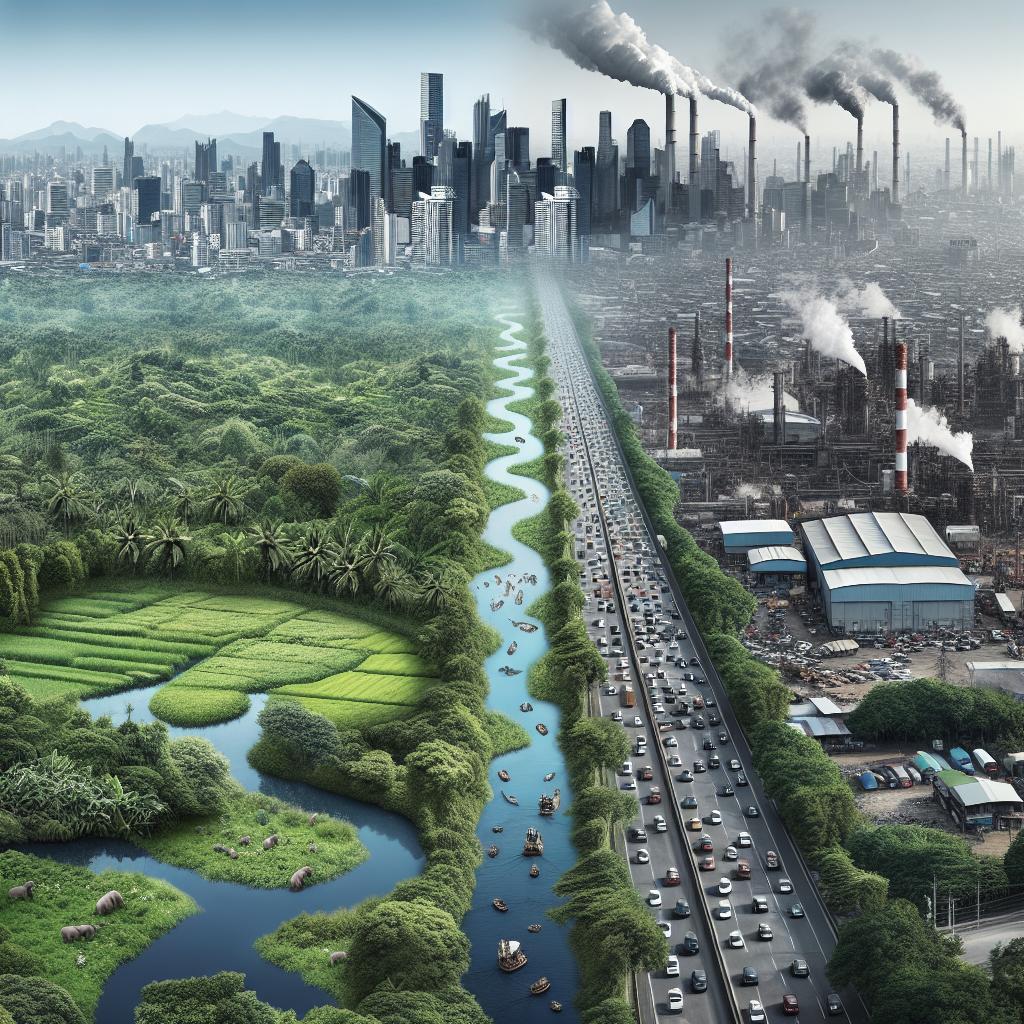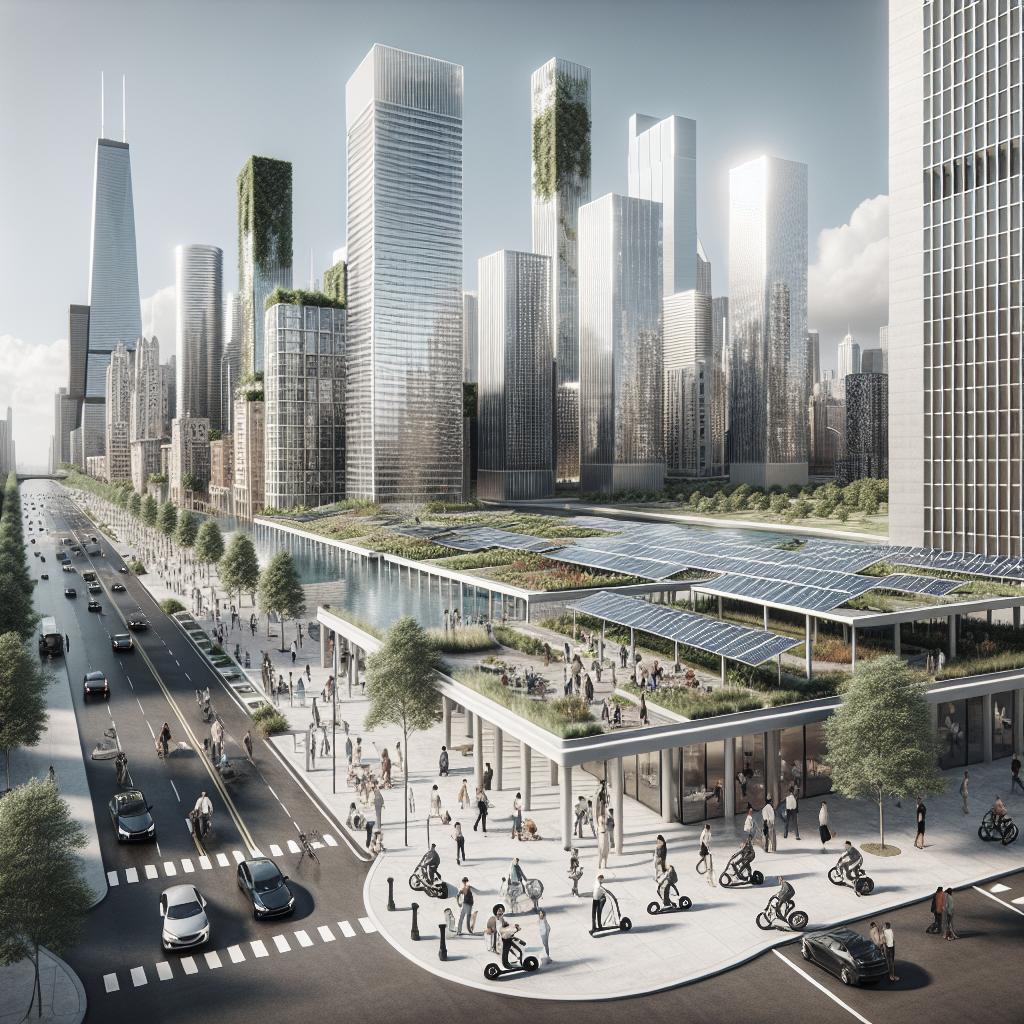<>
Urbanization, the process of population movement from rural to urban areas, is reshaping the world at an unprecedented pace. While urban living offers significant economic and social opportunities, it also presents numerous environmental challenges. This article delves into the multifaceted impact of urbanization on the environment, exploring the consequences of ecological disruption, resource consumption, pollution, natural and technological hazards, and the spread of infectious diseases. We will also touch upon the ramifications for human habitats and urban sprawl, and conclude with a reflection on our role and responsibility in this changing urban landscape.
Abstract
Urbanization has rapidly transformed human societies and the environment. This blog post examines the ecological impact of urbanization, emphasizing its role in habitat destruction, resource depletion, pollution, and increased susceptibility to natural and technological hazards. Additionally, the overcrowding of cities has accelerated the spread of infectious diseases and posed significant changes to human habitats. This detailed exploration highlights the need for sustainable urban development strategies.
Keywords
Urbanization, environment, ecological disruption, resource consumption, pollution, natural hazards, technological hazards, infectious disease, human habitat, urban sprawl
Citation
Martin, L. (2023). What is the impact of urbanization on the environment? [Blog post].
The city, defined
Urbanization entails the migration of populations from rural to urban areas, resulting in the expansion of cities. Modern cities are characterized by high population densities, extensive physical infrastructure, and significant economic activities. They serve as epicenters of industry, commerce, and culture. These urban environments facilitate innovation and economic growth but also bring about a set of environmental challenges. The interconnected nature of city life can strain resources and amplify the ecological footprint, underscoring the need for mindful urban planning and sustainable practices.
Ecological disruption
Urbanization disrupts natural ecosystems by converting landscapes into urban settings. Green spaces, forests, and wetlands are often cleared to make way for housing, infrastructure, and commercial projects, leading to habitat loss and biodiversity decline. The fragmentation of habitats interrupts the natural processes of ecosystems, impacting flora and fauna. Urban areas also create barriers to wildlife movement and migration, contributing to the isolation of species and reduced genetic diversity. The cumulative effect is a cascading disruption that can threaten ecosystem stability and resilience.
Resource consumption
Cities are substantial consumers of natural resources, including water, energy, and raw materials. The construction and maintenance of urban infrastructures, such as buildings, roads, and utilities, require significant resource inputs. This consumption pattern is not sustainable and places a heavy burden on natural ecosystems and resource reserves. The high demand for resources often leads to over-exploitation and unsustainable extraction practices. Water resources, in particular, are stressed by the increasing needs of urban populations, resulting in depletion of aquifers, rivers, and lakes, which can have far-reaching environmental impacts.
Pollution
Urban centers are major sources of pollution, including air, water, and soil contamination. The concentration of vehicles, industrial activities, and energy production in cities generates significant emissions of pollutants, such as carbon dioxide, methane, and nitrogen oxides, which contribute to climate change and air quality deterioration. Water bodies near urban areas are often polluted with industrial effluents, sewage, and urban runoff, which degrade aquatic ecosystems and pose health risks to human populations. Soil pollution from industrial and residential waste further compromises land productivity and ecosystem health.
Natural hazards
Urbanization increases the vulnerability of cities to natural hazards such as floods, earthquakes, and hurricanes. The modification of natural landscapes, including deforestation and the draining of wetlands, exacerbates the impacts of these events, making cities more susceptible to damage and loss. Moreover, the concentration of populations in urban areas amplifies the consequences of natural disasters. The potential for human and economic loss is significantly higher in densely populated cities, necessitating robust urban planning and disaster preparedness strategies to mitigate risks.
Technological hazards
In addition to natural hazards, urbanization introduces technological hazards, including industrial accidents, chemical spills, and infrastructure failures. The density of industrial activities and the extensive use of hazardous materials in urban areas increase the likelihood of such incidents. These technological hazards can have severe environmental and health impacts. For instance, industrial spills can contaminate water and soil, leading to long-term ecological damage and posing significant health risks to urban populations. Effective monitoring and regulation are essential to manage these risks.
Infectious disease
The high population density and connectivity of urban areas facilitate the rapid spread of infectious diseases. Urbanization creates environments where large numbers of people live in close proximity, increasing the transmission of pathogens. Poor sanitation, inadequate housing, and limited access to healthcare services in many urban areas exacerbate the spread of infectious diseases. The COVID-19 pandemic has highlighted the vulnerabilities of cities to global health crises and the importance of effective public health infrastructure and policies.
Human habitat
Urbanization reshapes human habitats, influencing the quality of life and well-being of city dwellers. While cities offer numerous opportunities, they also present challenges such as overcrowding, inadequate housing, and strained public services. The design and density of urban environments affect mental health, social interactions, and physical health. For sustainable human habitats, cities must focus on inclusive urban planning that promotes green spaces, affordable housing, and accessible public services to enhance the quality of urban life.
Sprawl, considered
Urban sprawl, the uncontrolled expansion of cities into surrounding rural areas, exacerbates the environmental impact of urbanization. Sprawl leads to the loss of agricultural land, increased vehicle dependency, and greater energy consumption. This spread-out urban development form often results in inefficient land use and increased carbon emissions, contributing to climate change and environmental degradation. Addressing urban sprawl requires comprehensive planning that encourages compact, transit-oriented development and the preservation of natural landscapes.
A final question
Upwardly Mobile
The trend of urbanization shows no signs of slowing, raising questions about the future of urban living. Can cities evolve in ways that minimize their environmental footprint while maximizing quality of life? Achieving sustainable urbanization is a complex challenge that requires innovative solutions and collaborative efforts from policymakers, urban planners, and communities.
You Are Here
As residents of urban environments, we occupy a central role in shaping the future of our cities. Individual choices, community actions, and advocacy for sustainable policies contribute to the broader effort of creating environmentally friendly urban spaces. Our awareness and involvement are crucial in driving the transition towards greener, more resilient urban centers.
Other Stories
Explore related topics that delve deeper into the intersection of urbanization and the environment. From green building practices to innovative public transportation solutions and the role of technology in smart cities, there are numerous stories illuminating how urban areas can become more sustainable.
One Response
Feedback and engagement from readers are invaluable. Share your thoughts and experiences on the environmental impact of urbanization. How has urbanization affected your city and community? What solutions do you believe hold the most promise for creating sustainable urban environments?
| Subheading | Summary |
|---|---|
| Abstract | Overview of urbanization’s environmental impact, including habitat disruption, resource depletion, and pollution. |
| Keywords | Urbanization, environment, ecological disruption, resource consumption, pollution, natural hazards, technological hazards, infectious disease, human habitat, urban sprawl. |
| Citation | Martin, L. (2023). Blog post title [Blog post]. |
| The city, defined | Explains urbanization and its characteristic features of high population density and economic activity. |
| Ecological disruption | Details how urbanization leads to habitat loss and biodiversity decline. |
| Resource consumption | Discusses urban areas’ high demand for resources and the resulting environmental strain. |
| Pollution | Examines how urban activities contribute to air, water, and soil pollution. |
| Natural hazards | Highlights the increased vulnerability of cities to natural disasters due to urbanization. |
| Technological hazards | Explores the risks of industrial accidents and infrastructure failures in urban areas. |
| Infectious disease | Looks at how high population density in cities accelerates the spread of infectious diseases. |
| Human habitat | Considers the effects of urbanization on quality of life and well-being in cities. |
| Sprawl, considered | Discusses the environmental impact of urban sprawl and the need for efficient urban planning. |
| A final question | Reflects on the potential for sustainable urbanization and the role of individuals and communities in this transition. |


